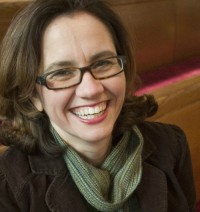What do you do when your church structure is killing you?
Many times we are working with church structures of a different time. I have seen churches with 50 people attending on Sunday morning, and they maintain 12 committees.
There may have been a lot of retirees in the church, so we have committees who meet in the day.
Or there might have been a lot of people without children, so everyone meets at night—on a different night, to ensure that the pastor is at every meeting.
Some structures expect members to join three committees (a necessity in order to fill all the slots), so that a member might be in church meetings three nights a month. And of course, in many churches, the pastor has to be at all the meetings—leaving his or her days filled with office hours, nights filled with meetings, weekends filled with services, and no down time.
The worst part of the meeting structure? They often don’t have any new life or energy breathing through them. The same people spend the same time talking about how we are going to do everything next week the exact same way that we did it last week.
All of this is a recipe for burnout, for pastors and parishioners.
What are some ways of getting out of this rut? Here is one way of restructuring church work. I will talk about another way tomorrow.
Open Space
Open space structures allow a church to organize work around energy.
1) Figure out what committees have to meet regularly. For instance, if you have a building that needs constant attention, then buildings and grounds might need to meet each month. Make sure that they continue to meet.
2) Get you leaders together for an extended time of worship, prayer and discernment. Perhaps a Saturday retreat.
3) During the retreat, invite your leadership to brainstorm. What are some of the challenges we need to face? What are some of the dreams we have for the church? Have them put the challenges and dreams down on a sticky pad.
4) Organize the sticky pad notes. Are there themes that arise? Are people excited about an alternative worship service? Do they want to do something about stewardship? Form a cloud of sticky notes around the different themes.
5) Ask, “What has legs?” In other words, what projects capture the imaginations of the leaders? What inspires them? What do they have energy for?
6) Identify leadership. When you can name the emerging theme, ask who would be excited about heading the project up. (Depending on the dynamics of the group, the pastor might want to name the leader.)
7) Do some planning around that project. Identify a timeline, then think about what, how, and who. A project might look like this:
Alternative Service
Time frame: one year
What?
We want a service that will reach a different group of people than the people who are attending on Sunday morning.
How?
We want to meet in the courtyard room, because it's a more intimate setting.
We will meet on Sunday night.
We will think about the ethnicity and/or language of the people we want to come.
We will have really great (bluegrass, folk, jazz, blues, international beat) music.
We will have prayer stations (or some sort of interactive worship experience).
We ask for seed money which will allow us to hire the leadership and supplies we need.
Who?
Lucille is great at transforming spaces into worshipful places. Maybe David.
James is a musician. He’s connected with a lot of people in town. Perhaps he can get a core group together.
Carmen is great at marketing and writing press releases.
Soon, we'll think about structuring church work around the liturgical year.






